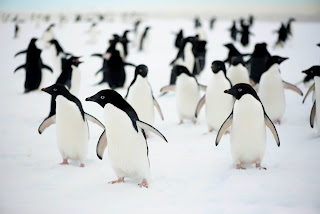The Day After Tomorrow

New research suggests something like the movie The Day After Tomorrow may have happened in the past, with sobering implications for the future. In this blockbuster, melting Arctic ice led to dramatic cooling across the Northern Hemisphere, highlighting the paradox that in a warming world, some regions may indeed cool (or at least not warm as much as expected). Whilst no one is suggesting this could lead to a new ice age, climate model projections do suggest some parts of the world may respond differently to long-term warming. One of the big uncertainties is the impact a melting Greenland ice sheet might have across the North Atlantic. At a simple level, the world’s oceans are connected as though by one enormous conveyor belt. At one end of the loop, warm tropical waters popularly known as the Gulf Stream drift up into the North Atlantic where over the course of a year the evaporating surface delivers heat downwind equivalent to the output from a million power stations. It’s a major r...






